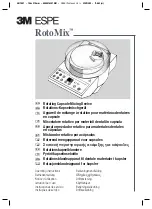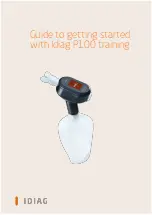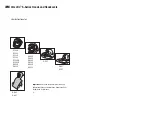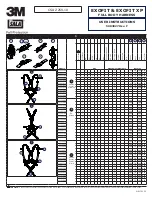
®
Ballistic Pendulum Accessory
Experiment 2: Conservation of Momentum and Energy
10
012-09842C
Experiment 2: Conservation of Momentum
and Energy
Background
In this experiment you will analyze the angular collision between a ball and a physical
pendulum. You will compare the rotational momentum of the ball before the collision
to the rotational momentum of the pendulum-ball system after the collision. Both
rotational momenta are measured about the pendulum’s pivot point.
You will also compare the kinetic energy of the ball before the collision, the kinetic
energy of the pendulum-ball system just after the collision, and the maximum poten-
tial energy of the system after the collision.
The data-taking phase of this experiment has three parts. In Part 1 you will use photo-
gates to measure the launch velocity of the ball. In Part 2 you will measure the maxi-
mum rotational velocity and angular displacement of the pendulum after the collision.
In Part 3 you will measure the rotational inertia of the pendulum-ball system.
Part 1: Measure Launch Velocity
Set up the launcher with two photogates and a photogate bracket (see Figure 2.1).
Measure the launch velocity (
V
launch
) of the ball on the fastest setting. Do several tri-
als and use the average value.
If you will be doing the Advanced Study part of this experiment, also measure the
launch velocity for the medium and slow settings.
Part 2: Record Ballistic Pendulum Data
Set-up
1.
Set up the equipment and software as described on pages 4 through 6 with the
pendulum rod attached to the RMS at the center hole and the catcher side of the
pendulum facing the launcher. Do
not
attach the ballast mass to the bottom of the
catcher.
2.
Install one of the sliding masses from the Mini Rotational Accessory as a coun-
terweight. Slide it onto the pendulum rod above the RMS attachment point.
Adjust the position of the counterweight so the pendulum is perfectly balanced
without the ball
. If you release the pendulum in the horizontal position, it should
not move. (See Figure 2.2.)
Figure 2.2: Pendulum balanced horizontally
3.
Prepare a graph to display angular velocity versus time and position versus time.
Figure 2.1: Launcher
with photogates
Counterweight



































